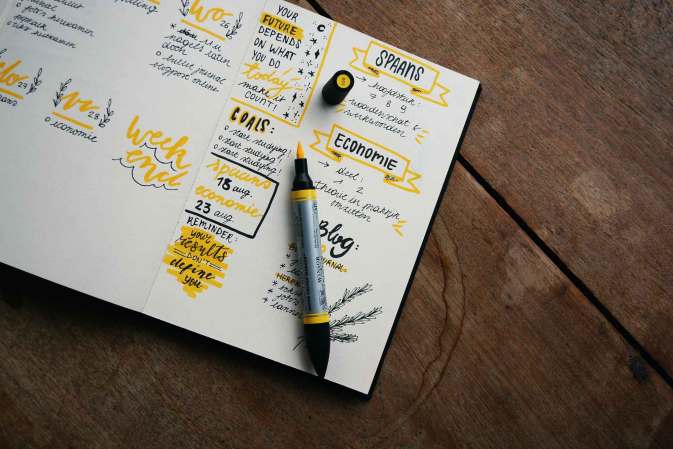

Whether you’re heading into the office or working from home, one of the best ways to stay productive and focused is to know exactly what you’re doing with your time. Luckily, there are several top-quality apps to do just that.
Among other things, these tools can help you see which projects are taking longer than they should, give you a better idea of what you should be charging for your time, and make sure you’re making the most out of every minute.
They’re particularly useful if you’re a freelancer, run your own business, or manage other people. But whatever your job description, you should be able to get some real benefits from using a time-tracking app like the ones we’ve featured below.
Toggl

Toggl helps businesses hire candidates and plan team projects, but it also has a capable time tracking component to suit individuals. Sign up and Toggl will begin keeping a close eye on your work schedule, whether that’s through manual records you add yourself, or by automatically logging the various websites and programs you’re using.
[Related: Nine apps that will improve your productivity at work]
Manual tracking is as simple as selecting what you’re doing and punching the clock at the beginning and the end of it. You can split your work up into different projects and clients, and organize it by tagging different time slots as meetings or unplanned work, for example. Everything is neatly laid out in a fluid interface, and you’ll have access to a host of different reports to see exactly where your time is going.
You get plenty of functions for free, including all the time tracking basics. Premium accounts ($10 a month), add features like project forecasts and support for teams.
Toggl is available for free on the web, Windows, macOS, Android, and iOS. Access premium features for $10 a month.
Timenotes

Timenotes lets you track multiple projects from multiple clients, and can produce a plethora of reports and charts on what you’ve been doing. The Timesheets view, for example, is a handy way of getting a detailed breakdown of a particular day, while the reports page lets you see how much time you’ve spent on a client or project.
Projects can be subdivided into tasks and there’s the option to add custom tags to each stretch of time if you need to categorize them further. What you don’t get with Timenotes (that other tools have) is the ability to automatically recognize which websites and programs you’re using. But if you’re concerned with your online privacy, you might prefer to keep it that way.
There’s no free tier with Timenotes, but you can try it for 30 days to see if you like it before paying anything. After that, the plan for individuals will set you back $19 per year, or a monthly payment of $7 for a team of up to 10 people. Unlimited plans start at $69 a month.
Timenotes is available on the web, Android, and iOS. Prices start at $19 a year after a 30-day free trial.
Clockify

Clockify counts the likes of Disney, Amazon, and Google as its clients, so it must be doing something right. It uses a simple but intuitive interface across multiple platforms that enables you to split your time up, assigning it to various clients and projects accordingly. You can then add extras like custom tags and billable rates on top if you need to.
One of the best features in Clockify is the way you can customize its reports and timesheets to show exactly the information you want to see, whether that’s a week-by-week calendar breakdown or a more straightforward list view. If you use the app to charge for your time, you can attach receipts and invoices to projects as well.
You can get started with Clockify for free, and you may not need to pay—ever. Extra features start at $5 a month, and include team support and more import/export options.
Clockify is available for free on the web, Windows, macOS, Android, and iOS. You can access extra features from $5 a month.
RescueTime

RescueTime takes a slightly different approach to other tools on this list, concentrating more on how you spend your time over the day in terms of work and personal time, rather than tracking specific projects and details like billable hours. You can then bring up some really nicely designed reports to know where your time is going over the course of each day.
One of RescueTime’s most useful features is the Focus Session option—it’ll actually block distracting websites and apps for you for a predefined period of time, so you can get on with whatever you need to be doing. It will also let you set a daily goal for uninterrupted work sessions and encourage you to hit it with regular reminders.
You can use RescueTime for free. Features like calendar syncing, Focus Sessions, and more extensive history reports are only available for premium accounts, which start at $12 a month.
RescueTime is available for free on the web, Windows, macOS, Android, and iOS. You can access extra features for $12 a month.
TrackingTime

Integrating with popular productivity tools such as Asana, Trello, Todoist, and Smartsheet, TrackingTime gives you just about everything you need to know to manage your and your team’s time. As well as tracking how long you and people in your business take on each task or project (via a quick, one-click system), the app can also help you plan out what you’re doing in advance.
Despite all of the functionality that you get in TrackingTime—covering project management, client billing, and work logging—it never feels cluttered or difficult to use. There’s also plenty of customization in terms of what you can track, with custom fields in each project that you can label as needed by work type, session location, or whatever you want.
You can use TrackingTime without paying anything at all, but there’s a three-user limit. To add more people to your team and get more advanced report options, you can get a premium subscription starting at $7 a month.
TrackingTime is available for free on the web, Windows, macOS, Android, and iOS. Support for more users starts at $7 a month.
TimeCamp

TimeCamp aims to make time and work tracking as straightforward as possible. Once you’ve set up your projects, you’ll only need to click a button to tell TimeCamp what you’re doing. This is an app to consider if you want to get up and running as quickly as possible, though there’s plenty more to TimeCamp as well.
That includes the option to track the specific programs and websites you’re using throughout the day, which comes in handy if you want a super-detailed breakdown of what you’ve been doing while sitting at your computer. Any logging that isn’t done in real time can always be added again later, and there are plenty of different time reports to pick from as well.
There is a free TimeCamp plan, but you can pay for a few extras starting at $7 a month. They include detailed productivity reports, Excel export options, and collaboration features.
TimeCamp is available for free on the web, Windows, macOS, Android, and iOS. You can access extra features from $7 a month.
Harvest

Harvest lets you specify what you’re doing with your time in great detail, down to clients, projects, tasks. and even task types. Getting all this configured takes a few minutes, but then it’s easy to start and stop the timers or add records later. You can also break down your time using the same task and project filters.
[Related: How to work from home without losing productivity]
The attention to detail on this app extends to when you need to get paid. Harvest is one of the best tools here at working out how much you’re owed for the different tasks you’ve done—you’ll get reports on what you should invoice each client every month and invoicing is built right in. When it comes to integrations with other software, Harvest plays nicely with apps such as Slack, Asana, Trello, Outlook, and Google Calendar.















